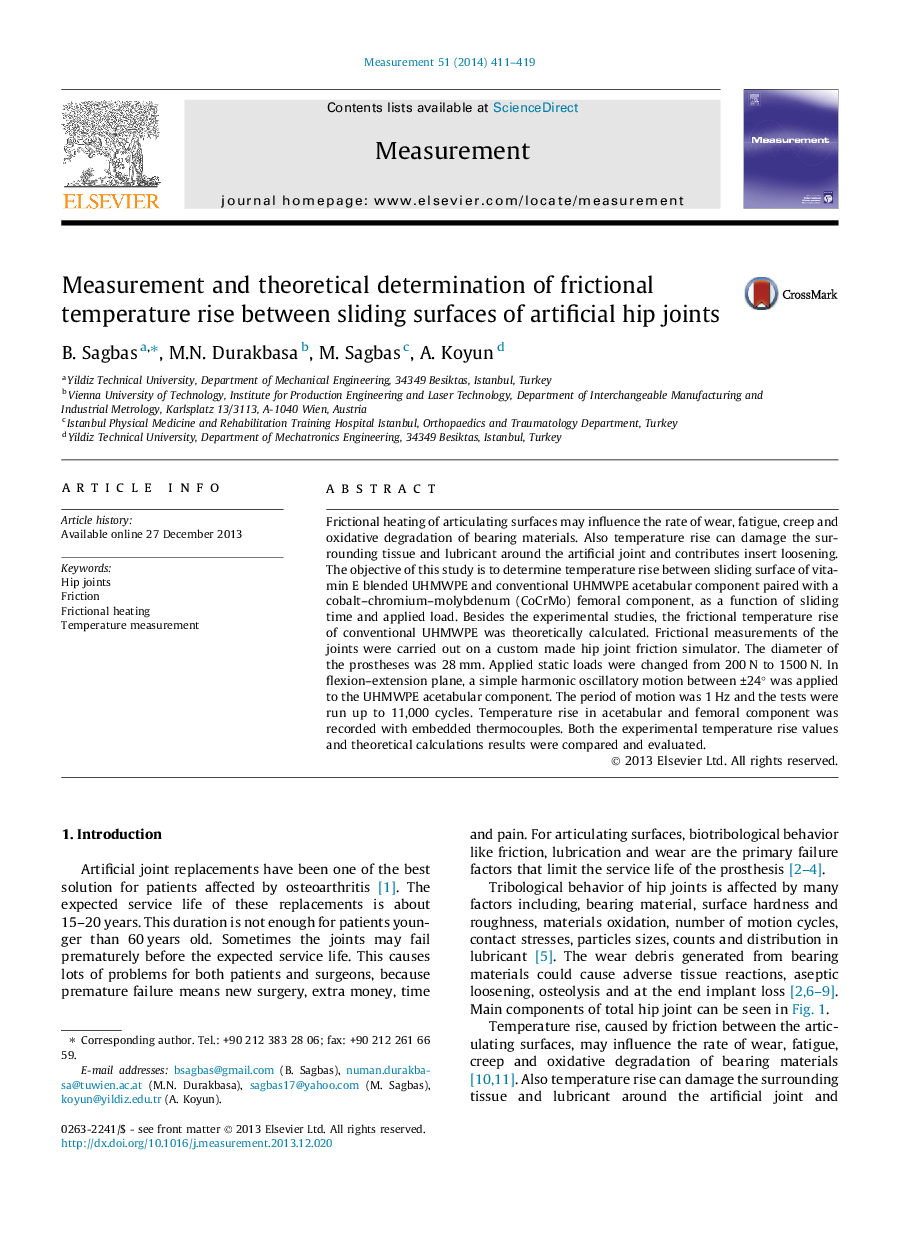| Article ID | Journal | Published Year | Pages | File Type |
|---|---|---|---|---|
| 7125522 | Measurement | 2014 | 9 Pages |
Abstract
Frictional heating of articulating surfaces may influence the rate of wear, fatigue, creep and oxidative degradation of bearing materials. Also temperature rise can damage the surrounding tissue and lubricant around the artificial joint and contributes insert loosening. The objective of this study is to determine temperature rise between sliding surface of vitamin E blended UHMWPE and conventional UHMWPE acetabular component paired with a cobalt-chromium-molybdenum (CoCrMo) femoral component, as a function of sliding time and applied load. Besides the experimental studies, the frictional temperature rise of conventional UHMWPE was theoretically calculated. Frictional measurements of the joints were carried out on a custom made hip joint friction simulator. The diameter of the prostheses was 28 mm. Applied static loads were changed from 200 N to 1500 N. In flexion-extension plane, a simple harmonic oscillatory motion between ±24° was applied to the UHMWPE acetabular component. The period of motion was 1 Hz and the tests were run up to 11,000 cycles. Temperature rise in acetabular and femoral component was recorded with embedded thermocouples. Both the experimental temperature rise values and theoretical calculations results were compared and evaluated.
Related Topics
Physical Sciences and Engineering
Engineering
Control and Systems Engineering
Authors
B. Sagbas, M.N. Durakbasa, M. Sagbas, A. Koyun,
